#Sengai
Text
#FrogFriday vs. #FishFriday:

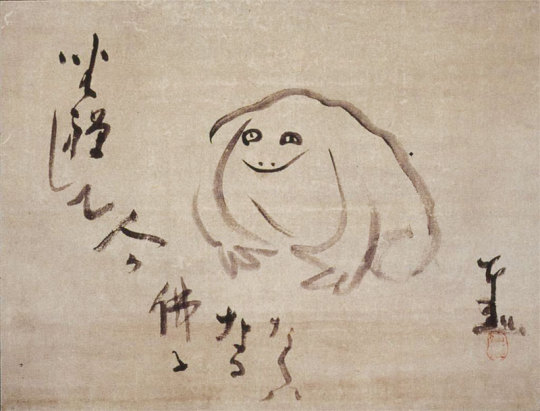
Sengai Gibon (Japan, Edo Period, 1750-1837)
ink & wash painting (sumi-e):
1. Fish, 40.3×53.8cm
2. Meditating Frog, 23.0x38.8cm
#Sengai Gibon#Sengai#Japanese art#Buddhist art#Zen art#East Asian art#Asian art#18th century art#19th century art#ink and wash painting#sumi-e#ink#illustration#painting#monochrome#works on paper#Fish Friday#Frog Friday#fish#frog#animals in art
80 notes
·
View notes
Text

Meditating Frog - Sengai
16 notes
·
View notes
Text
Word of the day week!
or, rather, yojijukugo (四字熟語, four-kanji compound) of the week. There are lots of idioms (or, ‘proverbs’) of this type, though not all of them are commonly used. The one I’d like to talk about today is
自画自賛 (ji-ga-ji-san), meaning “to sing one’s own praises”.
Read literally, the kanji of this idiom mean “own-picture, own-praise”. However, while 賛 can be translated as “to praise”, it meant something different in this context originally. There used to be a tradition in Eastern painting, to put thematically connected poems or other commentary on pictures. Such inscriptions were called 画賛, or 賛 for short. Usually, the inscription would have been made by a different person than the painter.
At first, the phrase 自画自賛 probably meant simply “to write something on your own picture��. But as 賛 has the second meaning of “praise”, with time the idiom came to be understood and used in a more negative sense: “to praise one’s own work”.
By the way, there's another yojijukugo with a similar meaning: 手前味噌 (temae-miso, lit. "[to boast of the unique taste of one's] homemade miso paste").
Here are some dictionaries I used.
Also, here's a couple of examples of 画賛:
A painting called Six Gentlemen by Yuan dynasty painter Ni Zan, with inscriptions by multiple people.

There's a chance that some of the writing is Ni Zan's, since he was also a poet and a calligrapher, but judging by the red stamps most of it must have been made later on by different owners. And, to be fair, according to wikipedia it already wouldn't have been called 画賛 in Yuan China, but it's not like I have all day to look for pre-Tang paintings. It's the spirit that counts and also Ni Zan rules
A painting called 坐禅蛙画賛 (something along the lines of A meditating frog, with inscription) by Edo-period zen monk Sengai.

This one is 自画自賛 in it's most literal sense. The inscription is also by Sengai and reads (roughly): "Indeed, by practicing sitting meditation a person becomes a Buddha". Check out the link for better quality!
1 note
·
View note
Text
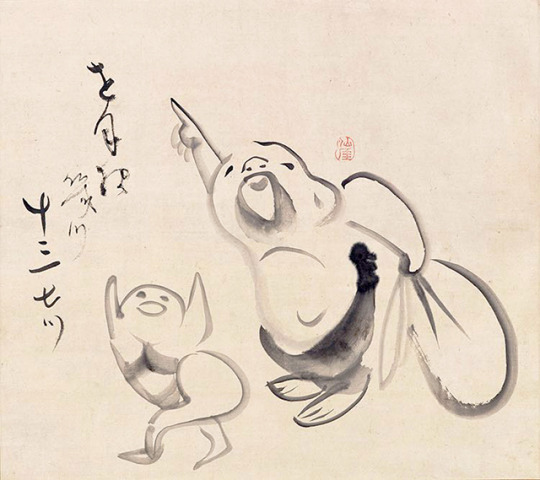
Gibon Sengai "Shigetsu - Hotei Gasan (A tribute to Hotei who points at the moon with his finger)", Edo period.
仙厓義梵『指月布袋画賛』江戸時代
53 notes
·
View notes
Text





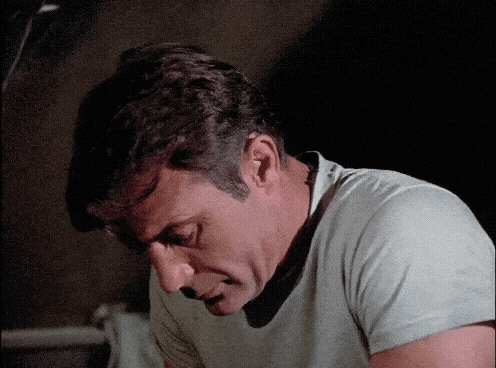
Dealing with the top brass giving Greg a headache again
Part 1 || Part 2
@thethistlegirl
#greg boyingon#black sheep squadron#baa baa black sheep#1x18#the last mission over sengai#robert conrad#my gifs#black sheep squadron gifs#my edit#part 2
17 notes
·
View notes
Text
"A obra não imita o modelo. Ela celebra a coincidência, mais valeria dizer a fusão, de dois fenômenos transitórios: uma forma, uma expressão ou uma atitude, e o impulso dado ao pincel. A seu modo a pintura zen exprime a essência do pensamento búdico, que recusa toda a realidade permanente aos seres e às coisas, e a aspira pelo Despertar de um estado em que são abolidas as distinções entre a existência e a não existência, a vida-e-morte, a vacuidade e a plenitude, o eu e o outro, o belo e o feio; estado também que, em virtude dos mesmos princípios, todos os meios são bons para atingir: o zen não estabelece nenhuma hierarquia de valores entre a meditação transcendental, o trocadilho ou a derrisão."
Lévi-Strauss em Sengai. A arte de se acomodar no mundo
0 notes
Text

0823-3000-6040 (WA), Pusat Grosir Kaos Kaki Muslimah Sengai KeliLangsung ORDER KLIK WA http://wa.me/6282330006040 , Pusat Grosir Kaos Kaki Muslimah Sengai Keli, Pusat Grosir Kaos Kaki Muslimah Tana Lia, Pusat Grosir Kaos Kaki Muslimah Tumbang Tariak, Pusat Grosir Kaos Kaki Muslimah Belawan Mulya, Pusat Grosir Kaos Kaki Muslimah Bereng Belawan, Pusat Grosir Kaos Kaki Muslimah Bereng Jun, Pusat Grosir Kaos Kaki Muslimah Fajar Harapan, Pusat Grosir Kaos Kaki Muslimah Gohong, Pusat Grosir Kaos Kaki Muslimah TakarasKami adalah Distributor Kaos Kaki Muslimah Terpercaya dan Terlengkap di Indonesia, Kami sudah berpengalaman sejak 2008 melayani penjualan secara online, melayani pembelian dari luar pulau hingga ke luar negeri.Kami Sedang Mencari mitra bisnis yang ingin menjual kaos kaki Muslimah dari kami.Untuk Info Lanjut Tentang Kemitraan silahkan di Hubungi di Sini:Nomor HP Ibu Tiva : 0823-3000-6040#PusatGrosirKaosKakiMuslimahSengaiKeli, #PusatGrosirKaosKakiMuslimahTanaLia, #PusatGrosirKaosKakiMuslimahTumbangTariak, #PusatGrosirKaosKakiMuslimahBelawanMulya, #PusatGrosirKaosKakiMuslimahBerengBelawan, #PusatGrosirKaosKakiMuslimahBerengJun, #PusatGrosirKaosKakiMuslimahFajarHarapan, #PusatGrosirKaosKakiMuslimahGohong, #PusatGrosirKaosKakiMuslimahTakaras
0 notes
Photo
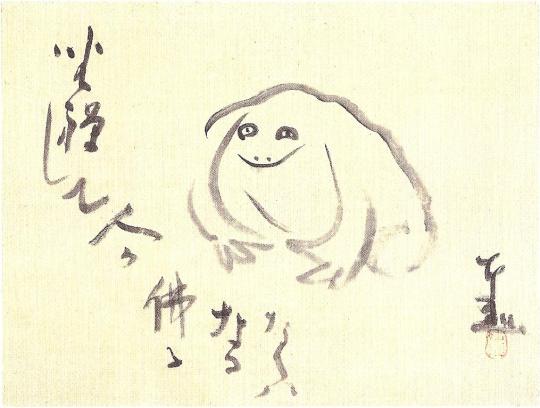
Sengai Gibon (1750-1837) - Meditating Frog
0 notes
Text

“Even before I can say it, it is no more.”—Sengai
#trees#birds#birds in flight#photographers on tumblr#original photography#maine#landscape#monochrome#sky#zen
509 notes
·
View notes
Photo
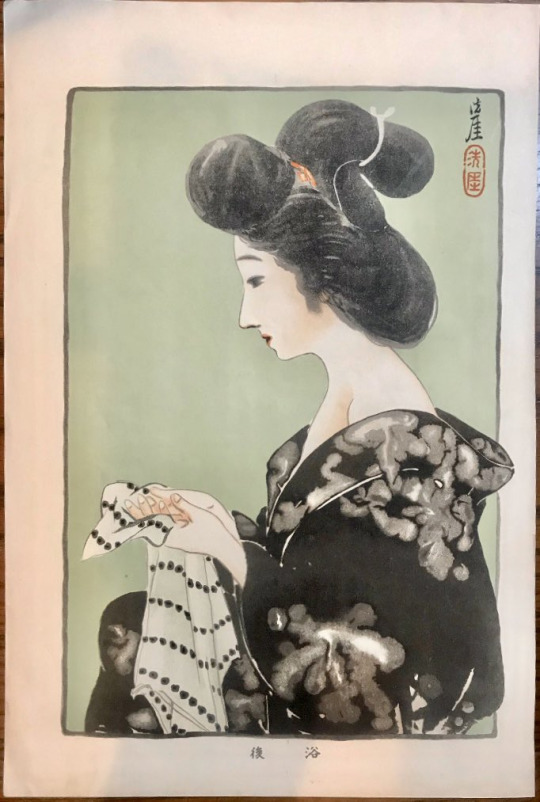
Illustration by Japanese artist Igawa Sengai , about 1920s
101 notes
·
View notes
Photo

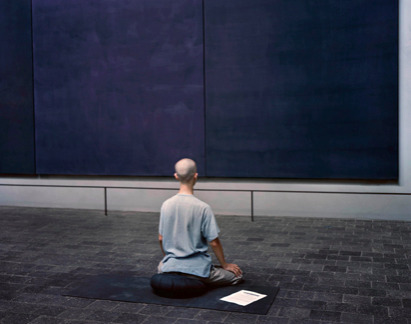
Great works of art in all cultures succeed in capturing within the constraints of their form both the pathos of anguish and a vision of its resolution. Take, for example, the languorous sentences of Proust or the haiku of Basho, the late quartets and sonatas of Beethoven, the tragicomic brushwork of Sengai or the daunting canvases of Rothko, the luminous self-portraits of Rembrandt and Hakuin. Such works achieve their resolution not through consoling or romantic images whereby anguish is transcended. They accept anguish without being overwhelmed by it. They reveal anguish as that which gives beauty its dignity and depth.
Excerpt from Buddhism Without Beliefs, by Stephen Batchelor
Photo of the Rothko Chapel, a non-denominational chapel in Houston, Texas, founded by John and Dominique de Menil
18 notes
·
View notes
Photo

Igawa Sengai, Dogfight between Japanese and Chinese Planes in 1937
53 notes
·
View notes
Text

Gibon Sengai "Dragon and Tiger" Late Edo period
Sengai Gibon (April 1750 - October 7, 1837) was a Zen monk and painter of the Kogetsu school of Rinzai Zen Buddhism in the Edo period. He is known for his Zen-like paintings. By the time he passed away at the age of 88, he had left behind many stylish and wandering paintings (Zen paintings).
仙厓義梵 「龍虎図」江戸時代後期
37 notes
·
View notes
Text
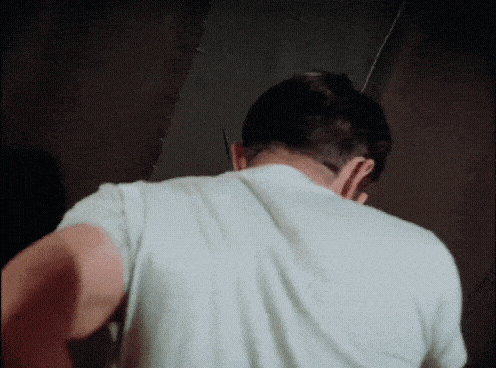





Dealing with the top brass giving Greg a headache again
Part 1 || Part 2
@thethistlegirl
#greg boyingon#black sheep squadron#baa baa black sheep#1x18#the last mission over Sengai#robert conrad#my gifs#black sheep squadron gifs#my edit#part 1
6 notes
·
View notes

